- Gehl
- FDC
- NOK
- Teijin Seiki
- Atlas Hydraulic Loaders
- Bonfiglioli
- Linde
- Uchida
- LiuGong
- Som
- Yanmar
- Nabco
- Schaeff
- Mottrol
- Komatsu
- Furukawa
- ZF
- Hitachi
- Nachi
- Misc
- Case
- Brevini
- Strickland
- Caterpillar
- Tong Myung
- Ditchwitch
- Kubota
- New Holland
- Hidromek
- Hanix
- Develon
- Poclain Hydraulics
- Hinowa
- Sany
- John Deere
- Bobcat
- IHI
- Ahwi
- Dana
- Rexroth
- Liebherr
- Lonking
- PMP Industries
- Kayaba
- Morooka
- JCB
- CNH
- Daikin
- Neuson
- Atlas Copco
- Hyest
- Danfoss
- Mitsubishi
- Kobelco
- O&K
- Tigercat
- Kato
- Hyundai
- Fiat Hitachi
- NTN
- Fiat Kobelco
- Daewoo
- Samsung
- NSK
- Toshiba
- LinkBelt
- Casappa
- Volvo
- Dinamic Oil
- Kawasaki
- Eaton
- Koehring
- Takeuchi
- Sumitomo
- Plant Parts
- Nabtesco
- Vermeer
- Doosan Final Drive Parts
- Terex
- Pel-Job
How To Make Hydraulic Connections to a Two Speed Final Drive
Incorrect installation of hydraulic lines can cause terminal failure of your final drive.
This post will help identify the hydraulic connections relevant to a two speed final drive – there may be up to 5 hydraulic connections:
- Two hydraulic lines to power the motor. These are the flow and return lines connected to the A & B ports (see images)
- A case drain / leak-off. It is very important to connect this to the correct DR port where applicable – see below
- A two speed line to control the final drive speed via the 2SP port
- A brake line. If fitted it is usually connected to the gearbox rather than the hydraulic motor.
Below are some examples of two speed final drives with their ports identified.
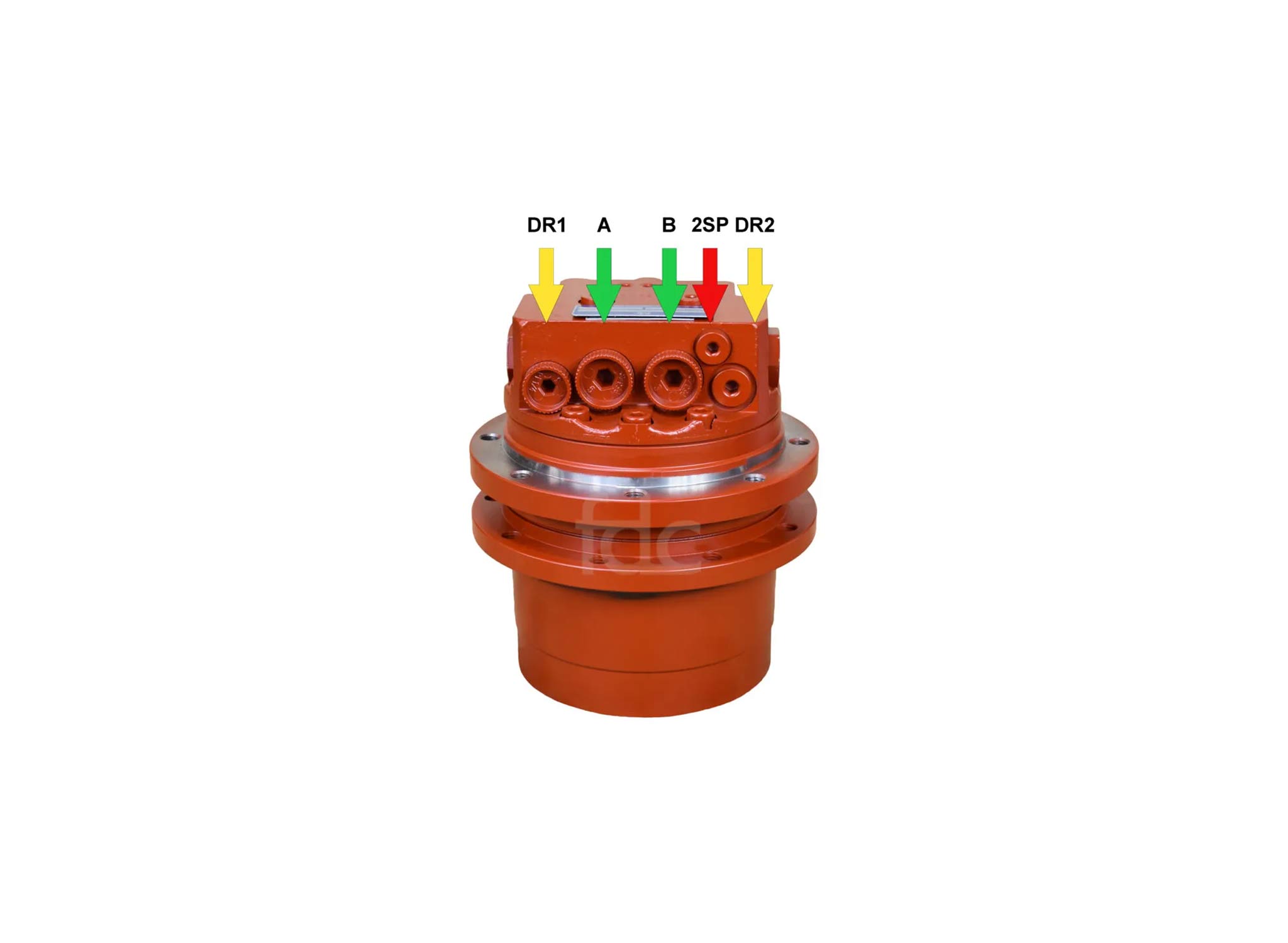
1.5T Mini Excavator
Integrated two speed final drive showing 5 front entry ports. The 2SP control port placed in between and slightly above the B & DR2 ports. The DR ports are interconnected and either can be used.
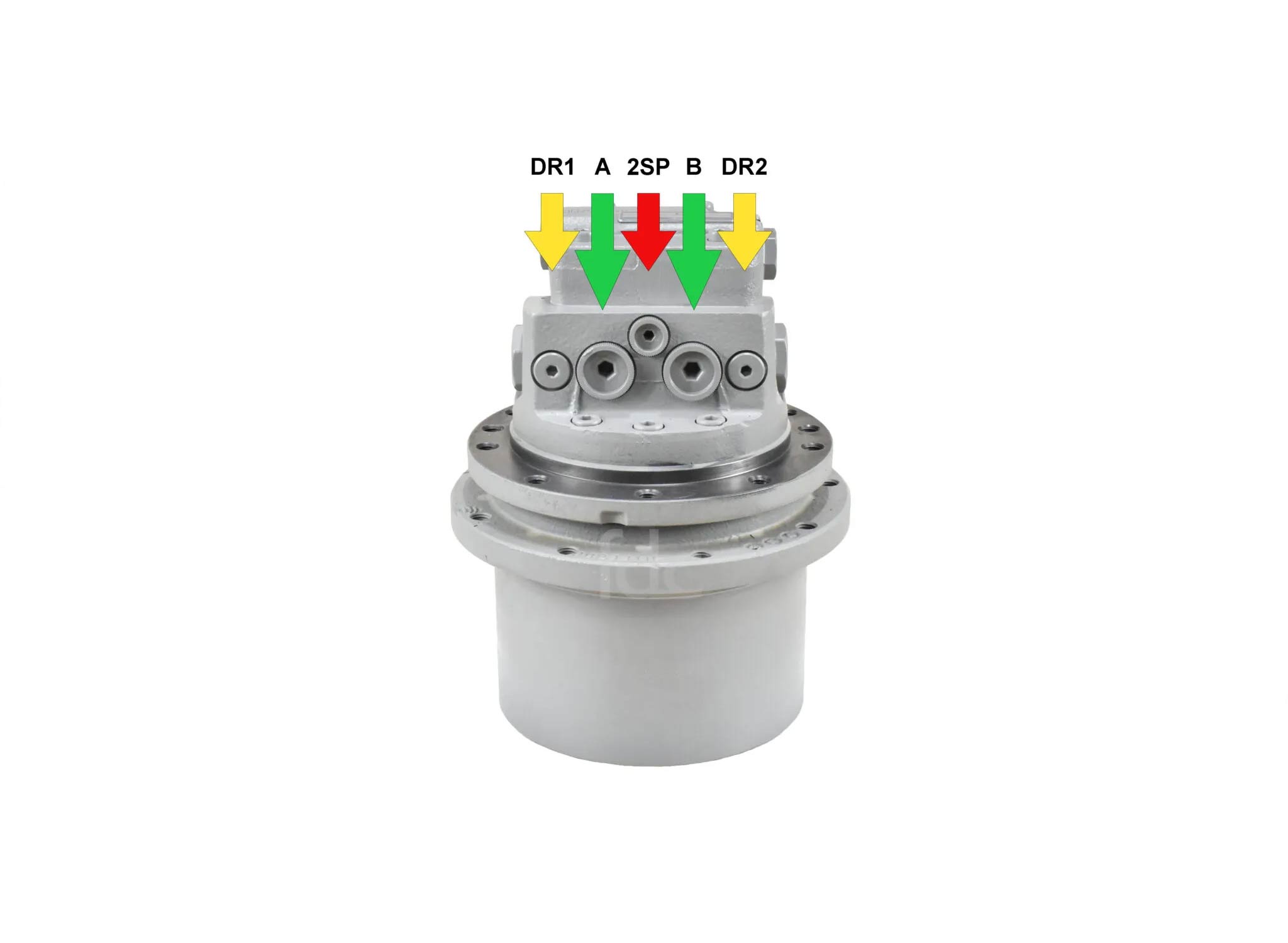
3T Excavator
Integrated two speed final drive showing 5 front entry ports. The DR ports are interconnected and either can be used.

3.5T Mini Excavator (Image 1)
Integrated two speed final drive showing 4 front entry ports. Either of the DR ports can be used.
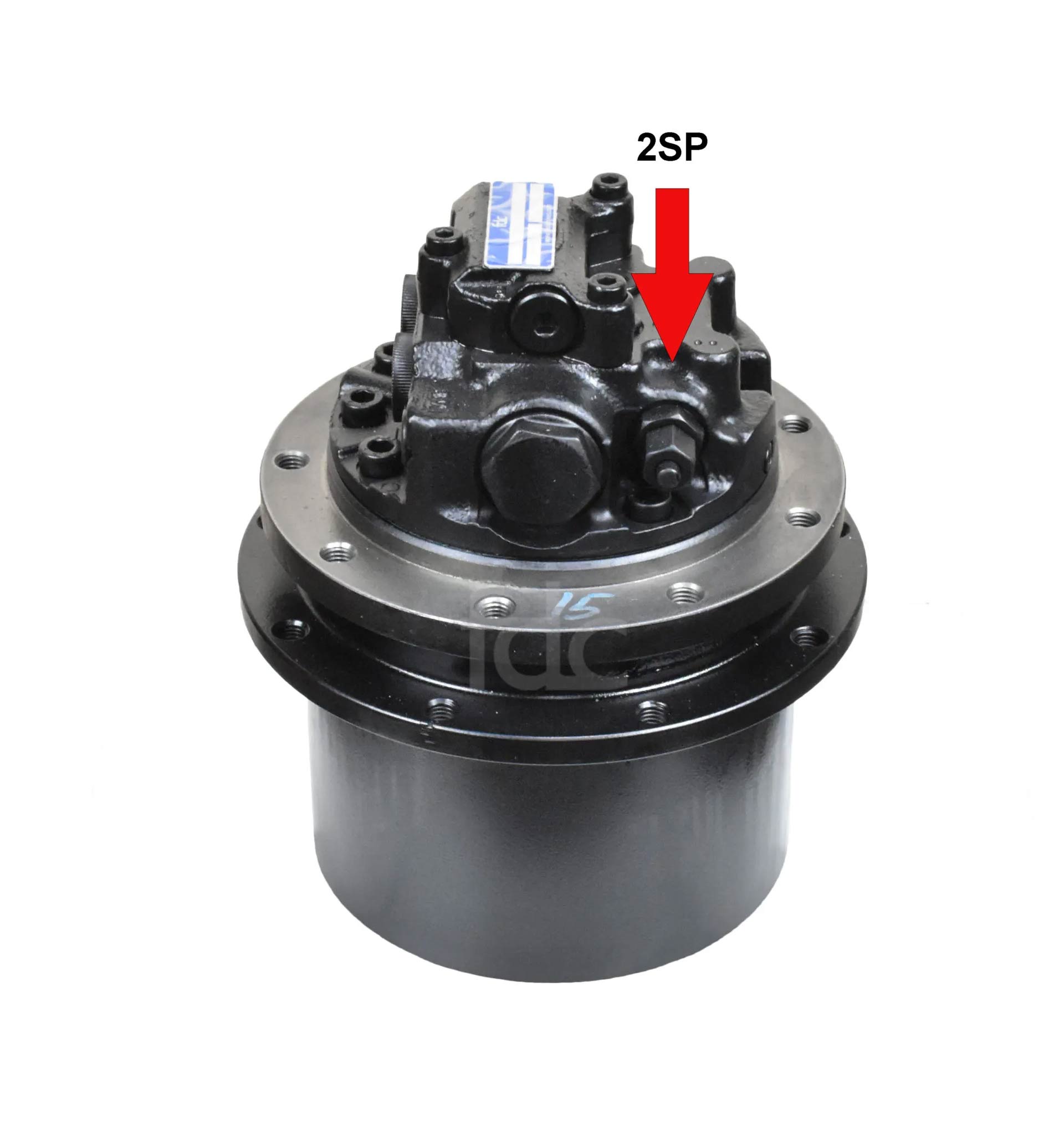
3.5T Mini Excavator (Image 2)
Integrated two speed final drive showing the 2SP port to the side.
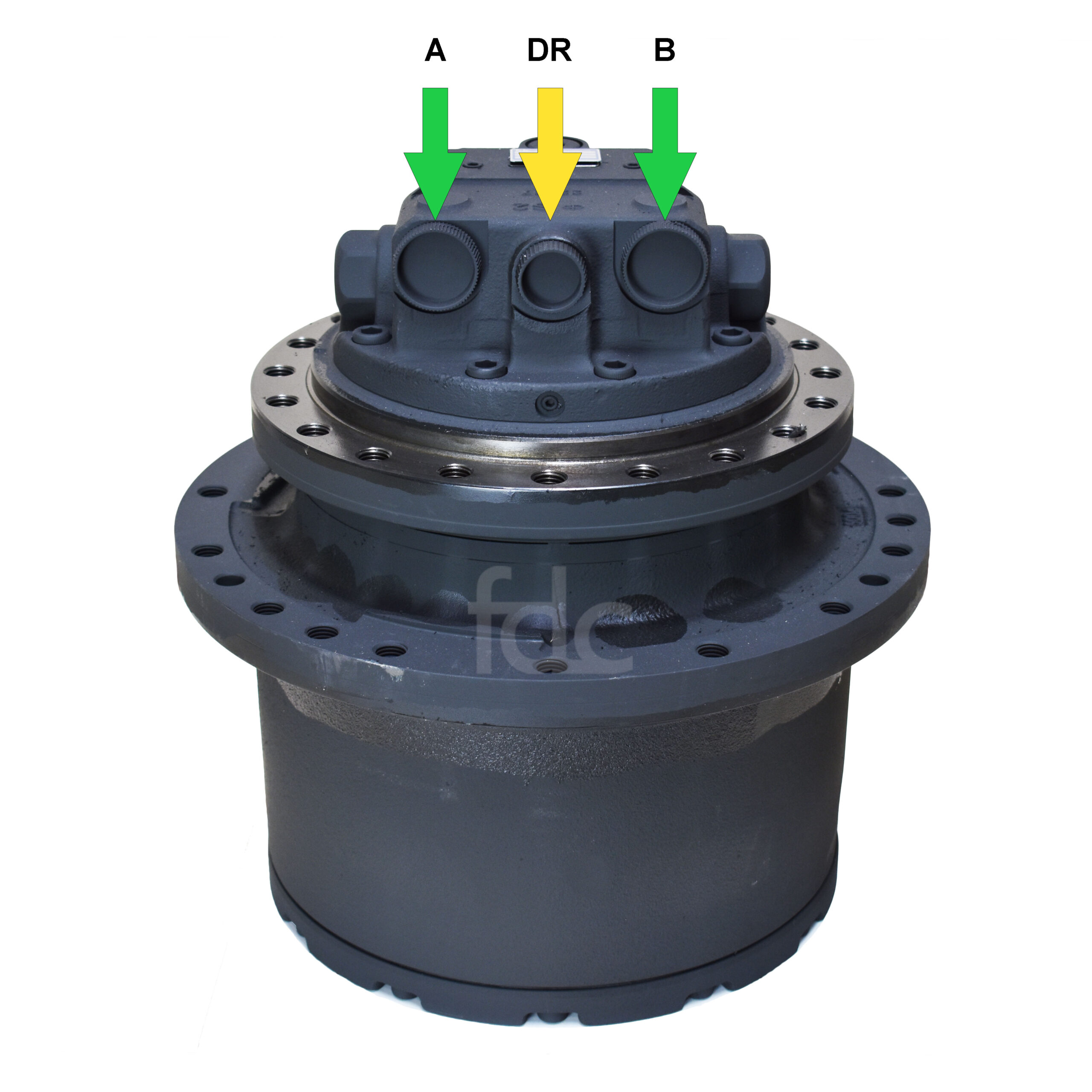
13T Excavator (Image 1)
DR port is between the A & B ports.
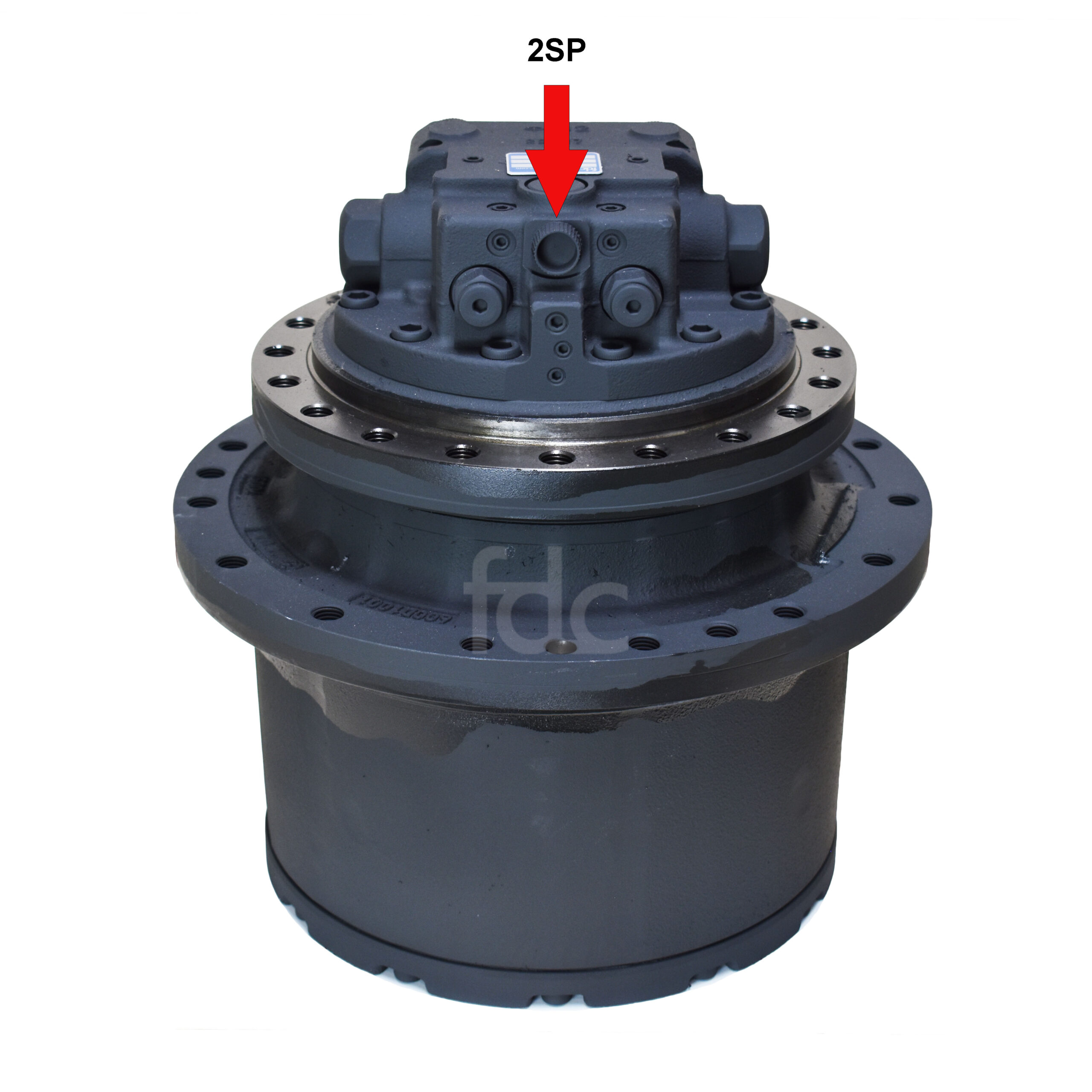
13T Excavator (Image 2)
The 2SP port is at the rear.
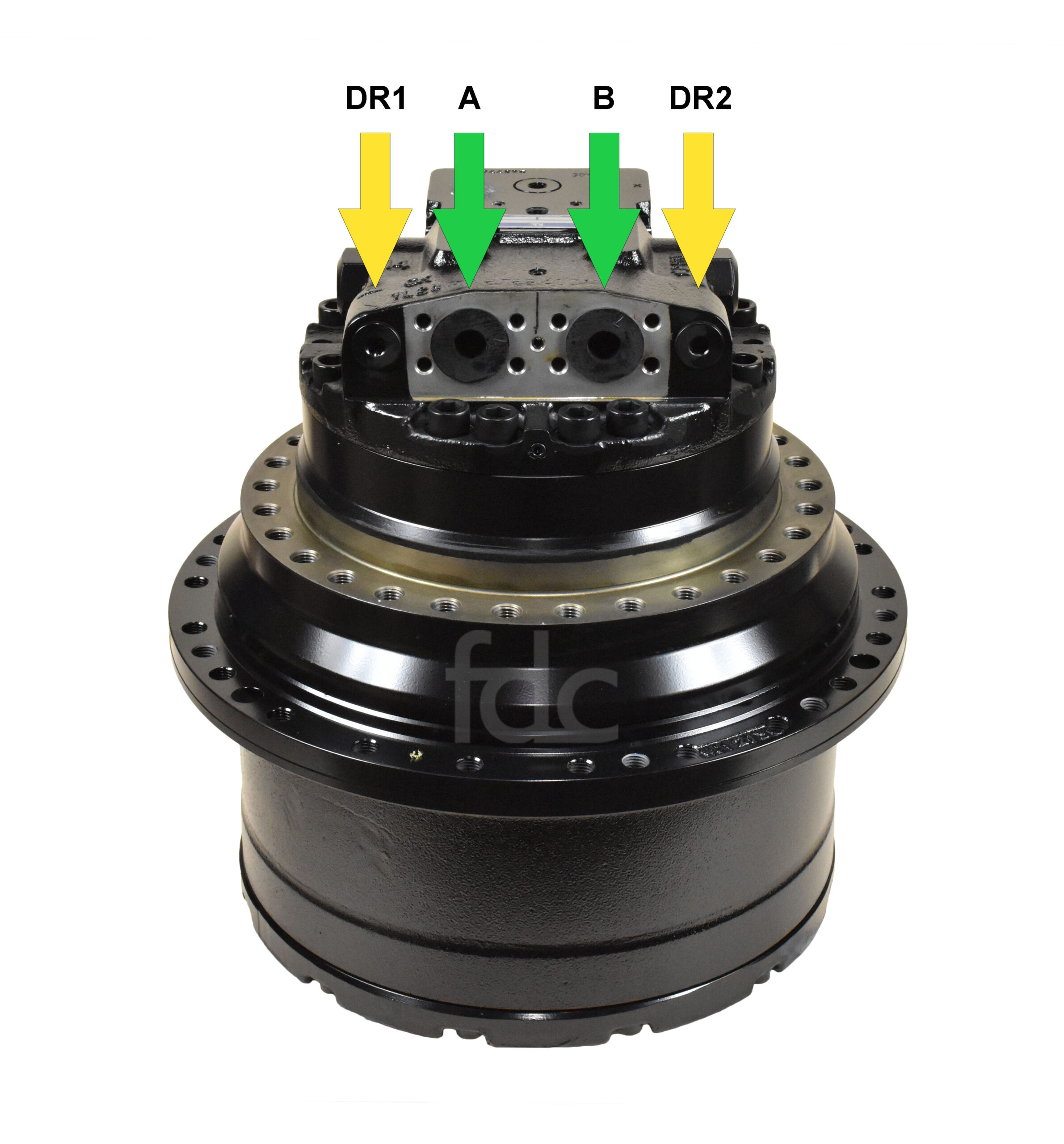
20T Excavator (Image 1)
DR ports are either side of the A & B ports.
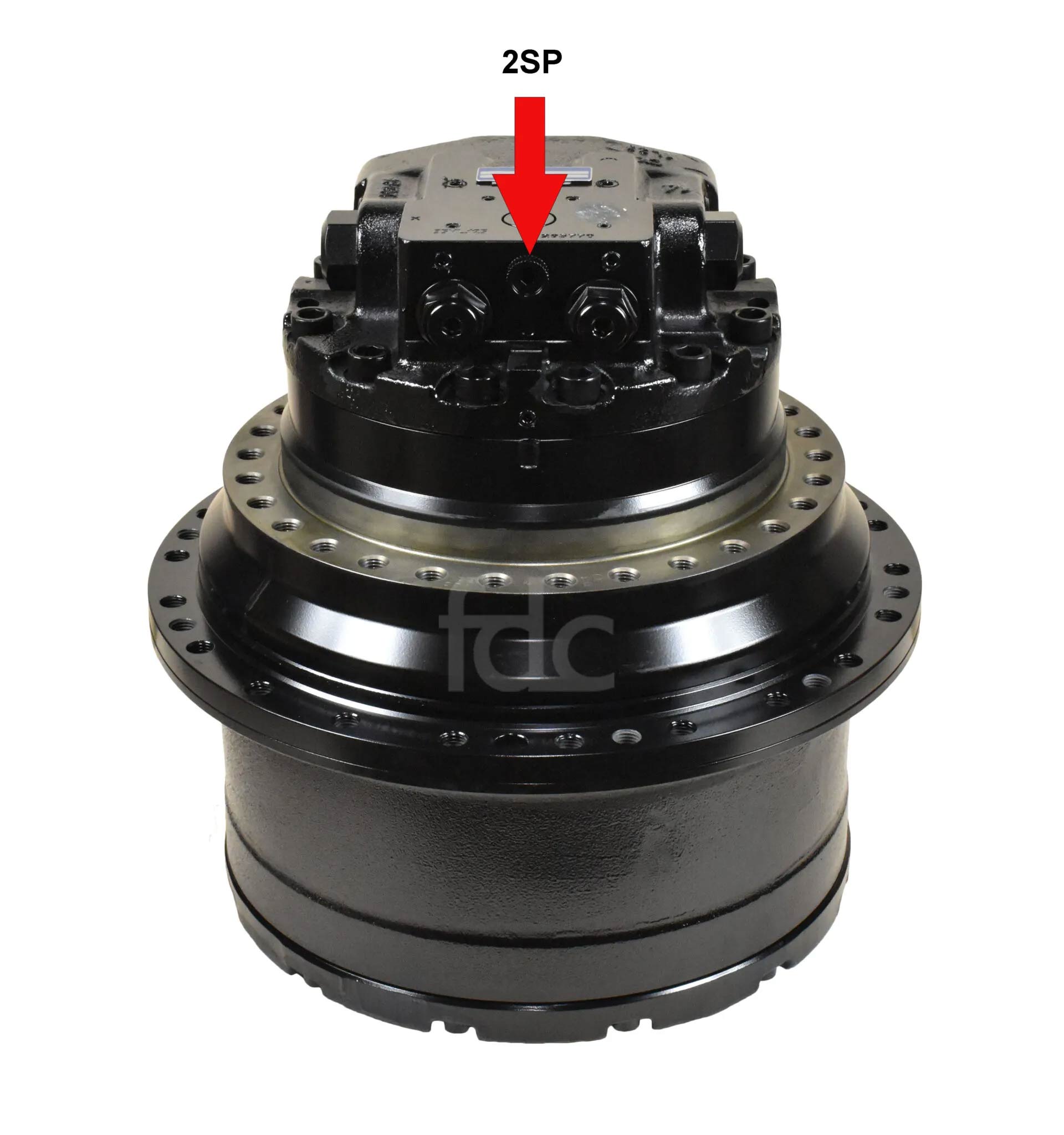
20T Excavator (Image 2)
The 2SP port is at the rear.
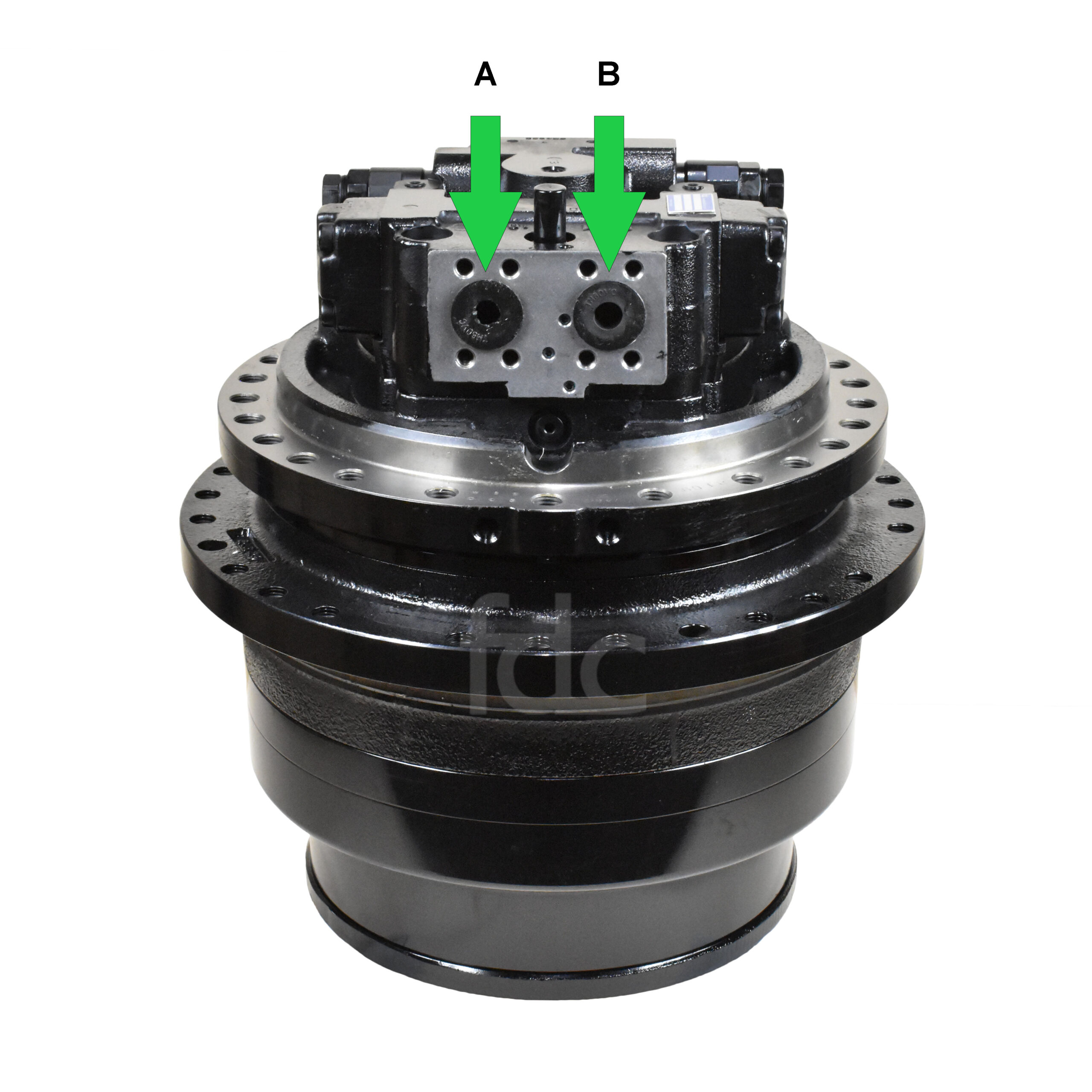
36T Excavator (Image 1)
‘Plug in’ two speed final drive. Front entry shows A & B ports.
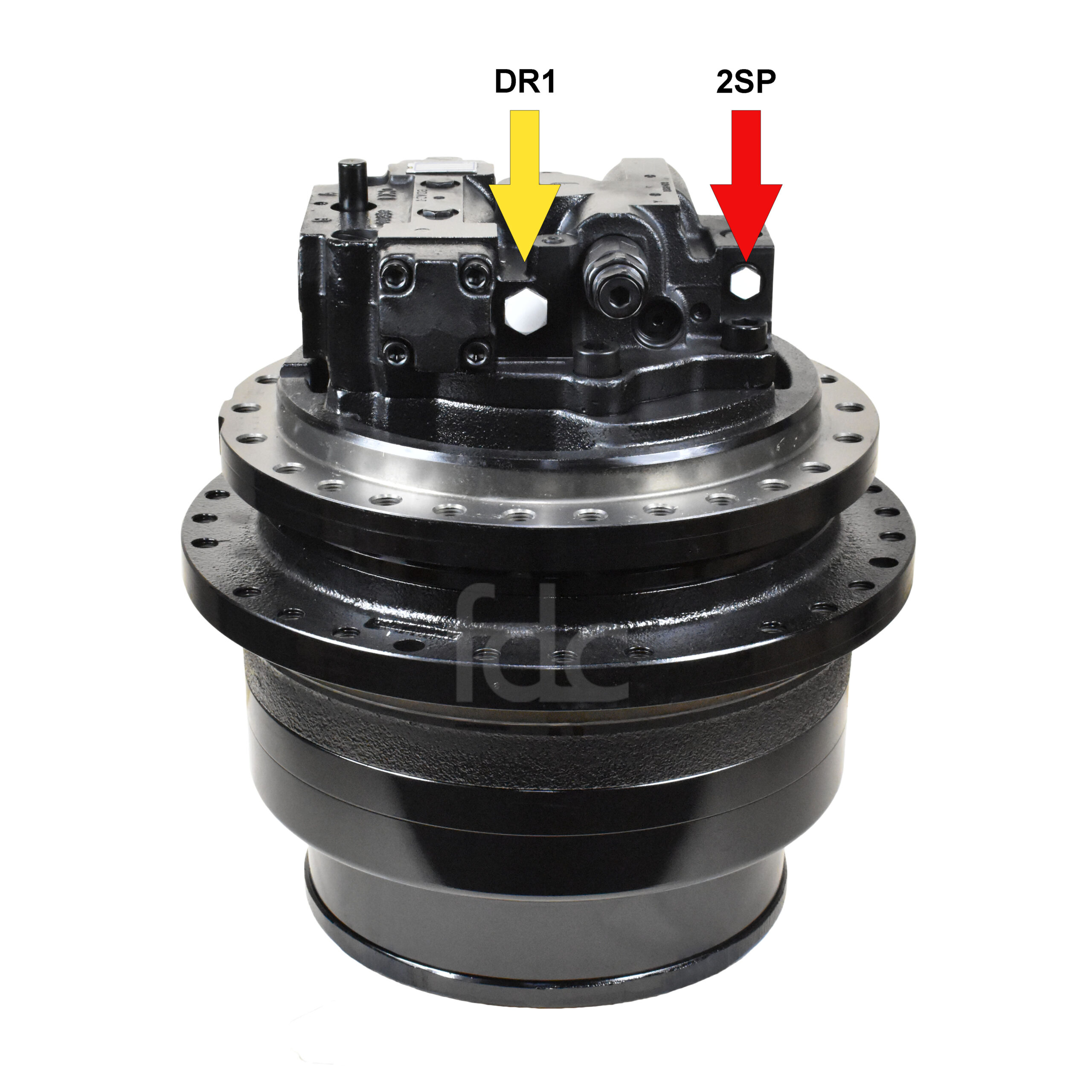
36T Excavator (Image 2)
‘Plug in’ two speed final drive. DR & 2SP ports on each side – either can be used.
A & B Ports (Flow and Return)
Forward and reverse main pressure ports. These are commonly the largest ports and are usually close together in the middle of the hydraulic manifold.
DR1 & DR2 Ports (Case Drain)
Drain line / leak off ports. Usually placed on either side of the A & B ports.
Only one is used – it is important to always attach the case drain pipe / hose to the upper port and fit a metal plus to the lower port. Some twin speed final drives have a single case drain port between the A & B ports.
In smaller final drives the twin speed hose/port and case drain hose/port are the same size so it is critical that the case drain hose is correctly identified.
Attaching a pressurised hose to this port can cause both hydraulic and mechanical failure. If plumbed incorrectly you WILL cause damage to the final drive. Be absolutely sure which line is which before connecting the hoses. If in doubt, contact your local FDC Partner.
All conventional axial piston motors must have a controlled leakage from the rotating group (motor) into the casing. This oil lubricates all moving parts within the rotating group and it MUST be able to drain back to the hydraulic tank relatively unrestricted via the swivel joint and return line filter.
The case drain oil also lubricates both motor shaft bearings. It is important that the case drain hose is connected to the uppermost case drain port (where there is an option) so the motor case is constantly full of oil.
If the case drain port is not connected or becomes blocked, the pressure inside the motor case will build, causing catastrophic damage to the motor and usually the gearbox.
2SP Port (Two Speed)
The two speed port tends to be the smallest on the final drive and can be found in different positions depending on the model and manufacturer.
It can be found on the front of the manifold centered between the A & B ports or located on the side or rear of the manifold.
Brake Port
With the exception of Tracked Dumpers and other faster moving tracked machines it is unusual to find a brake port in an integrated gearbox and motor as the brake is usually controlled automatically.
Where a separate “plug-in” motor is used the brake port is usually found on the gearbox. If equipped, the port location will be clearly shown in the installation instructions.
